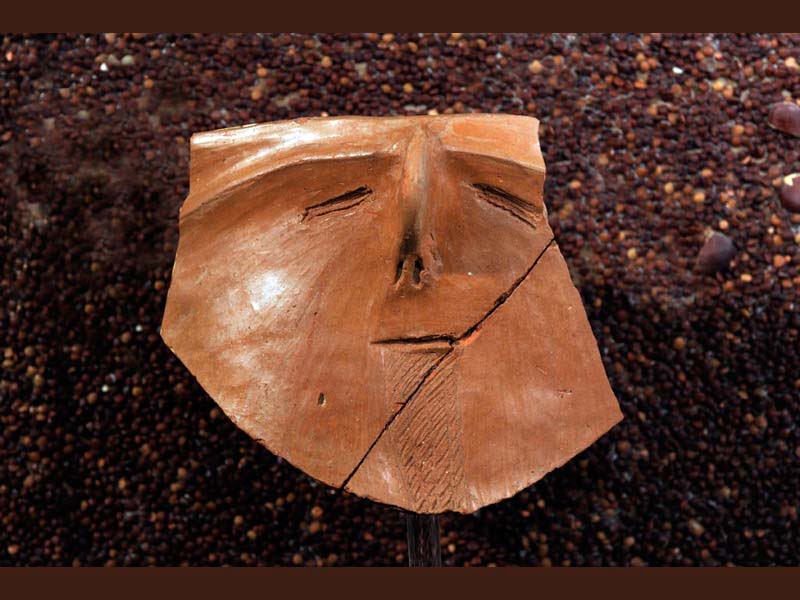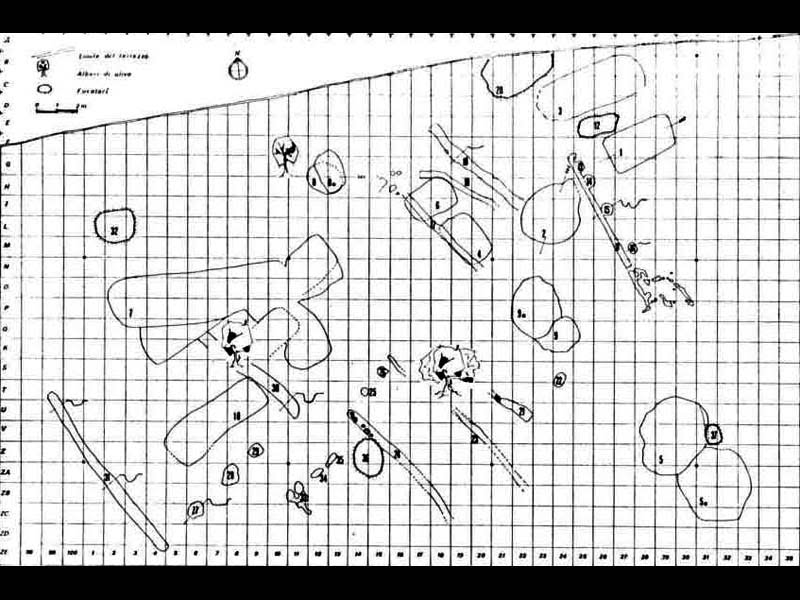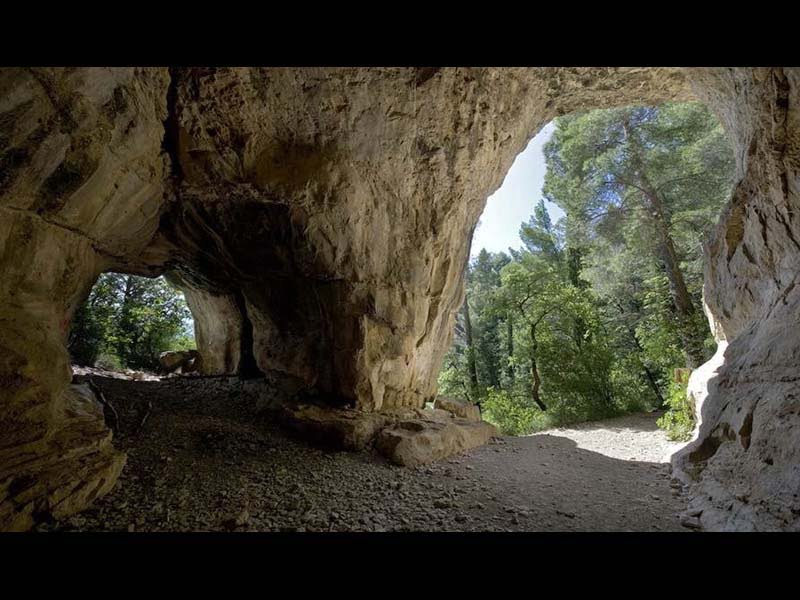di Giusi Di Crescenzo
The culture of Catignano belongs to the ancient phase of affirmation of the culture of painted ceramics: to the period between 5400 and 4900 BC
Its discovery filled a gap in the prehistory of the Abruzzo region and made it possible to reunite the advanced phase of the Culture of Imprinted Ceramics with the culture of Ripoli.
The site of Catignano - which gives its name to the culture - is located in the locality of Sterpara/Ponte Rosso, three kilometers from what is now the center called Catignano, in the province of Pescara, on a river terrace located at the confluence of the Nora and the Fosso dei Cappuccini.
The history of the research, which will lead to the definition of the culture of Catignano, begins in the second half of the 70th century. The first discoveries date back to the early XNUMXs by the group of volunteer archaeologists led by Claudio de Pompeis and shortly after by the work of the University of Pisa.
"Up until the 60s Abruzzo and Marche were considered a homogeneous region in terms of Neolithic characteristics and peculiarities. When Radmilli (1974) gave his definition of «Abruzzese aspect of the Marches» the distribution of the sites almost exclusively occupied the area of the region north of the Pescara river."[1]
It was only in the 80s that there were a series of discoveries that introduced novelties and led to the identification of an autonomous civilization with ceramic figurines painted with red bands.
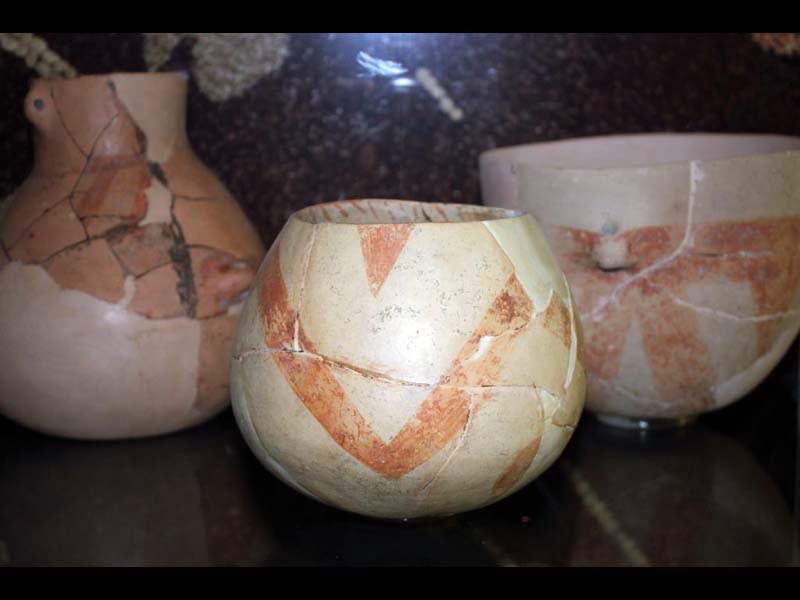
However, according to Marta Colombo and Carlo Tozzi "Although archaeological studies and excavations in Abruzzo have continued without interruption since the second half of the XNUMXth century, numerous questions still remain open regarding the modalities of the neolithization process and the development of the cultures that have affected the territory."[2]
The position of the Abruzzo region in the center of Italy has in fact allowed for intense relations with both the cultures of the north and with the cultures of the south and the numerous passes that allow the crossing of the Apennines have allowed relations with the Tyrrhenian side: all witnessed relations from the characteristics of the pottery of the various Neolithic cultures.
"Furthermore, especially in the second half of the 900s, scholars have repeatedly emphasized the contributions from the eastern Adriatic shore... during the so-called 'Middle Neolithic', characterized in Abruzzo by the Catignano Culture and on the eastern Adriatic shore by the Danilo Culture. Along the mid-Adriatic slope, from the Montagna dei Fiori in the north to the southern slope of the Maiella in the south, and from the coast to the Fucino Basin to the west, the culture of Imprinted Ceramics in the middle Adriatic was followed by the affirmation of painted pottery cultures with the Culture of Catignano, which establishes a relationship between Abruzzo and the southern aspects of the various red-banded facies."[3]
Relations between the two shores are witnessed above all in the first phase of neolithization, when impressed ceramic appears and develops on both shores of the Adriatic, starting in Italy from the settlements on the southern coasts and on the islands, then going up along the coast towards the north .
With painted pottery the differences between the different areas increase considerably. “The links almost disappear, or fade until they become difficult to recognize ... in the period in which central-southern Italy is characterized by the birth and evolution within the impressed pottery of the red banded facies (catignano, Raven Pass)."[4]
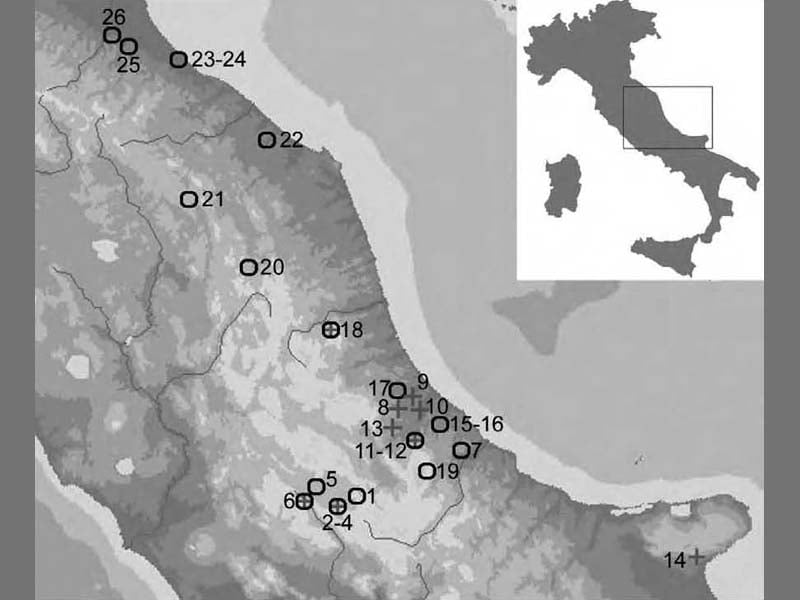
The sites that can certainly be attributed to the Culture of Catignano are 3 villages: catignano, Colle Cera, Villa Badessa, and 8 caves: Grotta dei Piccioni, Grotta Oscura di Bolognano, Grotta Sant'Angelo, Grotta la Punta, Grotta San Nicola, Grotta Continenza, Grotta Beatrice Cenci.
At the current state of research, the sites definitely attributed to the Culture of Catignano are limited to a few settlements, but "if we compare the richness and complexity of the cultural aspect that emerged in Catignano with the scarcity of reports on a very large territory we must conclude that many sites have yet to be discovered"[5]
Then there is Scalaria cave considered until recently the point of greatest expansion of the Catignano culture, but according to Marta Colombo the presence in that cave of vases clearly attributable to the Catignano culture would rather be due to the cultic value of the cavity and the deposited vases from other areas. “Moreover, in the Grotta Scaloria Bassa not all the ceramic classes characteristic of the Culture of Catignano are represented, but only the figurine ceramic, often richly decorated in red and 'a negative'"[6]
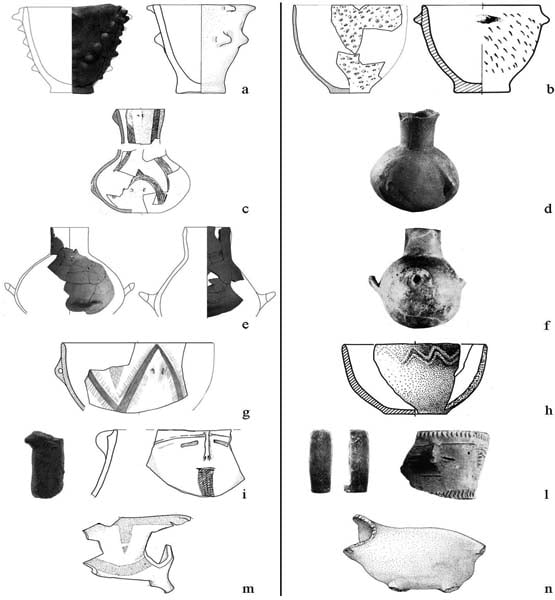
Among the caves the best known are certainly the Grotta dei Piccioni in the locality of Bolognano, in the province of Pescara in the valley of the river Orte and the Grotta Sant'Angelo, on the south wall of the Montagna dei Fiori in the province of Teramo which are also the caves on which the interest of archaeological research was first directed and they were also the first to return evidence of the Neolithic in Abruzzo.
The attendance of the two caves goes from the Neolithic to the Bronze Age. And their frequentation is mostly considered of a cultic nature even if hypotheses have been made for the Grotta Sant'Angelo as a refuge on transhumance routes. But as Tomaso Di Fraia and Daniela Tiberio point out in one of their writings, the characteristic of the finds found in this cave is the great variety of cultural facies, which in fact suggests rather cave-sanctuaries into which people of various origins flocked in possession of the most diverse objects.
Spindle spindles are among the most significant artifacts, typically feminine objects and reconcilable with a ritual destination that recalls the activity of weaving and the related symbolic imagery of life "woven" by women.
Di Fraia and Tiberio then make a further observation which reveals the extraordinary symbolic value of this cave "among about fifty cavities that open along the Salinello valley, this cave is the only one in which such an important anthropic deposit has accumulated, despite being in an impervious position. Now the rock wall on which the access corridor opens has three cavities that seem to configure the nasal cavity and the eye sockets of a skull and this characteristic is also repeated for a series of niches inside the cave; it is therefore highly probable that this visual impact of the real landscape had a powerful effect on the mental imagery of the groups they attended, giving them a peculiar symbolic value."[7]
The symbolic value of the various aspects of life is certainly one of the most significant characteristics of the prehistory of humanity and leaves to our imagination and reflection the possibility of intuiting a relationship between human beings and the surrounding natural environment which was of intimate connection, magical vision, inspiration of a consciousness and knowledge without intermediaries.
"The most important testimony relating to forms of worship is that of the Grotta dei Piccioni, with the circles containing particular offerings ... the desire to create, as for the pits, a space defined as to contain objects linked to some ritual, which we can hypothesize, seems evident connected to an ideology belonging to the agricultural world and to the myths of the death and resurrection of plants"[8]
It is precisely with regard to the presence of ditches and circles in the Grotta dei Piccioni that the scholar Antonio Mario Radmilli was the first to raise the question of cults in the 60s "looking for the possible connections between cultic manifestations and funeral rites in a general framework from which an ideology connected to the agricultural world and to the vegetative death-resurrection cycle could emerge"[9]
Giusi Di Crescenzo - 2022
Footnotes
[1] Giovanna Radi and Carlo Tozzi, 2009.
[2] Marta Colombo and Carlo Tozzi, 2013.
[3] Marta Colombo and Carlo Tozzi, 2013.
[4] Marta Colombo and Carlo Tozzi, 2013.
[5] Marta Colombo, 2010.
[6] Marta Colombo, 2010.
[7] Tommaso Di Fraia and Daniela Tiberio, 2006.
[8] Renata Grifoni Cremonesi, 2012.
[9] Renata Grifoni Cremonesi, 2012.
REFERENCES
- Giovanna Radi and Carlo Tozzi – “Imprinted ceramics and the culture of Catignano in Abruzzo” – in De Méditerranée et D'Ailleurs… Mélanges offerts à Jean Guilaine – Toulouse 2009;
- Marta Colombo and Carlo Tozzi – “The Culture of Catignano in the panorama of Italian neolithic painted pottery: contacts with the cultures of the eastern Adriatic shore” – in Studies in Mediterranean Archeology for Mario Benzi – Oxford 2013;
- Marta Colombo – “New data on the culture of Catignano: ideas and problems on its classification in the context of ceramics painted with red bands” – in Origini – XXXII – New Series IV – 2010;
- Marta Colombo – “Standardization of the measurements and decorations of the vases in the Culture of Catignano (5400/4900 cal BC): the presence of "units of measurement" in the Italian Neolithic” – in Acts of the XNUMXst International Congress on Estudios Ceramicos – University of Cadiz 2013;
- Alexander Dzbinsky – “Articles online. Un nouveau phénomène métrologique dans l'Europe néolitique” – in Bulletin de la Société prehistorique française volume 103 no. 1 – 2006 – pp. 160-169;
- Elizabeth A. Fisher – Women's Creation: Sexual Evolution and the Shaping of Society – Wildwood House Ltd – 1980;
- Tommaso Di Fraia and Daniela Tiberio – “New data from the Grotta Sant'Angelo in Civitella del Tronto (Te): which cults and/or which activities?” – in Prehistory and Protohistory in Etruria. Eighth meeting of Studies. Real landscapes and mental landscapes. Searches and excavations – 2006 – p. 477-489;
- Georges Vincent – “La volumemétrie dans les agrosystèmes prehistoriques: céramique étalon (bell-shaped) or instrument de mesure complexe? The ceramic container and the bell-shaped model” – in Bulletin de la Société prehistorique française – volume 103 n. 3 - 2006 - p. 609 - 613.

